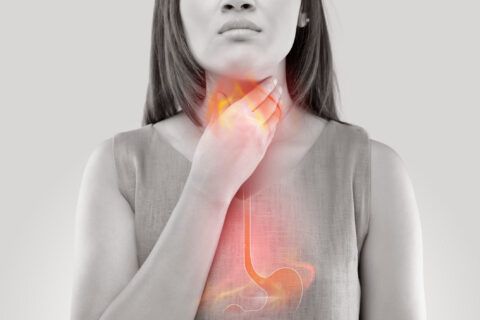What is Barrett's Esophagus?
The esophagus is the tube that connects the mouth to the stomach. You may not give it much thought until something goes wrong. Gastroesophageal reflux disease (GERD) is the most common problem with the esophagus. This occurs when the valve between the lower esophagus and the stomach—known as the lower esophageal sphincter (LES)—doesn’t close properly. This allows acid and stomach contents to leak back into the esophagus and irritate the sensitive lining. Symptoms of GERD include heartburn, regurgitation, bad breath, and painful swallowing. The damage caused to the esophagus lining can lead to a condition called Barrett’s esophagus.
What is Barrett's Esophagus?
This is a condition in which the cells lining the lower esophagus are damaged by acid reflux. In the body’s attempt to protect the esophagus from the effects of GERD, these cells are replaced by intestinal-type cells. The abnormal cell growth, known as dysplasia, occurs in about 10 percent of people with chronic, long-standing GERD. Untreated Barrett’s esophagus progresses into esophageal cancer in about 5 to 10 percent of cases. That’s why, if you have this condition, it’s important to have periodic checkups, screenings, and biopsies to check if cancer is developing and treat precancerous cells if necessary.
Symptoms of Barrett's Esophagus
The most common indication that you have Barrett’s esophagus is if you struggle with frequent heartburn and regurgitation—in other words, if you have GERD. Less common symptoms include chest pain, difficulty swallowing, and bleeding from esophageal ulcers. Interestingly, about half of all patients diagnosed with Barrett’s esophagus experience little, if any, acid reflux symptoms, a condition known as “silent reflux.” So to be safe, discuss your digestive health and the possibility of Barrett’s esophagus with your doctor.
Risk Factors for Barrett's Esophagus
While anyone can develop Barrett’s esophagus, the most prominent risk factors include:
- Long-standing GERD: You are at the greatest risk if you have severe GERD that requires you to take medication or doesn’t respond well to medication. The odds increase the longer you have this condition.
- Family history: Genetics plays a role, so your chances of developing Barrett’s esophagus are higher if any family members have this condition.
- Gender: Men are more likely than women to develop Barrett’s esophagus.
- Race: White people have a higher risk than other races.
- Age: The most common age group to contract Barrett’s esophagus is 50 and over.
- Smoking: Whether you currently smoke or smoked in the past, this increases your risk.
- Weight: Excess body fat around the abdomen increases the risk for Barrett’s esophagus, so overweight and obese people are more likely to contract it.
Diagnosing Barrett's Esophagus
Barrett’s esophagus has a distinct appearance when viewed through an endoscope, so endoscopy is the most common diagnostic method. This is when a doctor passes a flexible tube with a camera on the end down your throat and into your esophagus. The footage shows the doctor any surface abnormalities, such as acid reflux damage or the presence of an ulcer or hernia.
If the esophagus appears abnormal, the doctor will take a biopsy, or tissue sample, to be viewed under a microscope. This reveals any cellular changes, which allows the doctor to accurately diagnose Barrett’s esophagus. Your tissue may be classified in the following ways:
- No dysplasia: Barrett’s esophagus is present, but no precancerous changes are found in the cells.
- Low-grade dysplasia: Cells show minor signs of precancerous changes.
- High-grade dysplasia: Cells show major changes and are likely to become cancerous.
Treating Barrett's Esophagus
The recommended treatment depends on the extent of the dysplasia found in your esophagus.
- If you are diagnosed with no dysplasia, your doctor may recommend GERD medication, dietary changes, and periodic endoscopy to monitor your esophagus.
- If you are diagnosed with low-grade dysplasia, it’s possible to remove damaged cells and prevent cancer using endoscopic resection, radiofrequency ablation, or cryotherapy.
- If you are diagnosed with high-grade dysplasia, your doctor may recommend removing cells with endoscopic resection, radiofrequency ablation, or cryotherapy. Surgery is also an option, which involves removing the damaged part of the esophagus and attaching the remaining portion to the stomach. Follow-up testing may be needed to check for recurrence of Barrett’s esophagus.
If you’ve struggled to control heartburn, regurgitation, and acid reflux for years, you may be at risk for Barrett’s esophagus. Visit Dr. Vivian Asamoah for the care you need. Our gastroenterology center in Katy, TX uses advanced tools and technology to diagnose your condition and recommend the proper treatment. We also treat GERD to help you control the underlying cause and help your esophagus heal. When you’re ready to reclaim your digestive health, please contact us.









